The Salesforce State of Marketing Report 2020 edition includes insights from nearly 7,000 marketing leaders worldwide. The Salesforce Research team conducts an annual survey to unveil a year-over-year (YoY) comparison with a focus on marketing skill sets, social engagement standards, privacy policies, and data management strategies. Salesforce, with its flagship Marketing Cloud customer base, has access to marketing professionals all across the globe, which will only be further enriched with its recent acquisition of The CMO Club.
In the wake of a global pandemic, the marketing landscape has been predictably affected by the change in consumer behaviors. Marketing leaders are at the forefront of innovation with brands diversifying their portfolios to accommodate this change. A new set of obstacles may also appear in this “socially-distanced” world. Hence, it is always best to stay prepared.
We would like to present to you some of our favorite insights from the 88-page report, enabling you to keep an eye on the competition, and choosing the best course of action.
Insights from the State of Marketing Report 2020
1. Allocation of Marketing Budgets across B2B and B2C:
B2C: Advertising – Technology – Content – People – Research
B2B: Advertising – Technology – Account-based Marketing – People/Research/Content
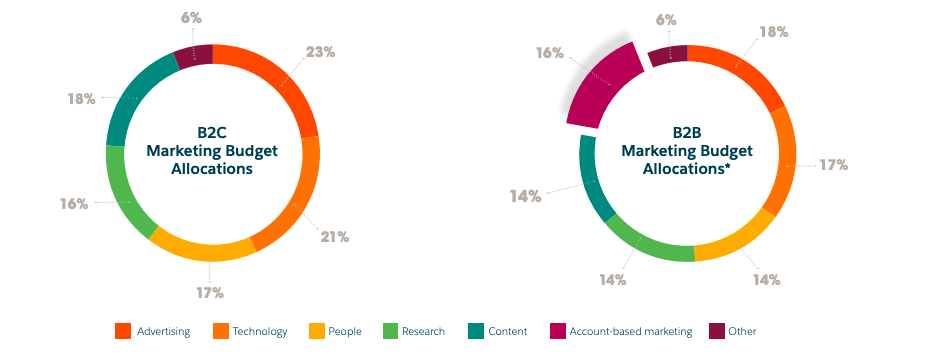
2. Contribution in Customer Journey:
Customer Journey can be mapped across numerous touchpoints to create a viable customer experience strategy. The best value might be derived from building cross-functional teams to realize maximum contribution.
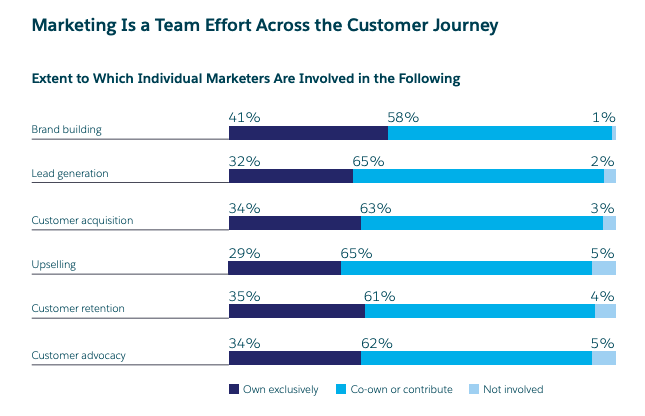
3. Adoption of Digital Channels:
Omni-channel marketing has been trending for years. This decade has had marketers focused on increasing the adoption of digital touchpoints, with major growth seen across:
- Search engine marketing (SEM): 40% growth
- Customer communities: 35% growth
- Mobile apps: 34% growth

Don’t forget to check out Algoworks for reliable Salesforce development services and AppExchange app development services!
4. Adapting to the New Marketing Tools:
Evidently, Artificial Intelligence, Social marketing tools, and Marketing analytics are the top choices. Many marketers are increasingly turning to an array of digital tools and platforms to engage customers at precisely the right moment, on the right channel.
Let’s consider Video marketing tools and the Customer Data Platform. 50% of the high performers will invest here v/s 13% of low performers. A similar pattern can be seen in the Customer data platform, where high performers are 1.5x more likely to invest against low performers.
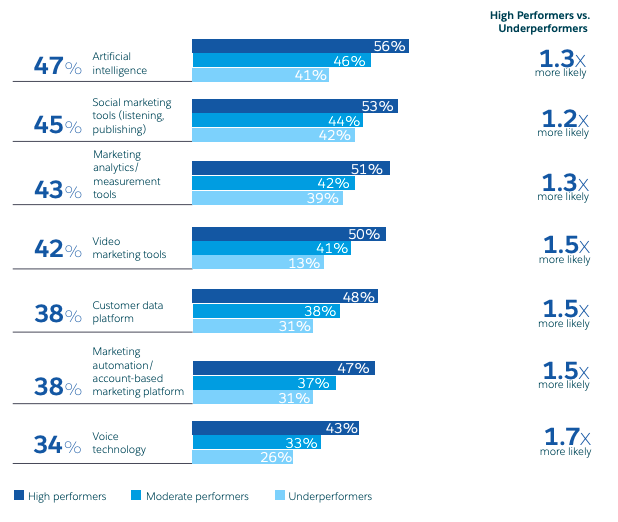
5. Satisfaction with their Marketing Data:
The 5 key measures of marketing data listed in the report are Identity reconciliation, Consent management, Integration, Timeliness, and Data quality/hygiene. On average, each of these sections shows a satisfaction index of only a third.
What’s even more surprising is the fact that even the high performers are dissatisfied with these 5 measures of data, hanging around 50% satisfaction index. The importance of data quality is well-known and companies employ the best analysts to ensure clean data for extracting actionable insights.

6. AI Adoption in Marketing:
Artificial Intelligence has seen a surge in demand across marketing needs since the last State of Marketing edition, from 29% in 2018 to 84% in 2020. Be it SMB organizations or enterprise organizations, the marketers understand the future importance of a fully defined AI strategy.
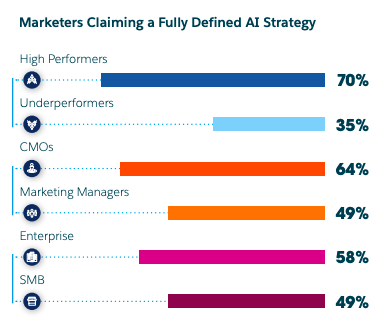
7. Metrics which Marketers are tracking:
The most significant change in metrics being tracked, over the past two years, are Web/mobile analytics and customer acquisition costs.
Bonus Takeaway: Less than half of the marketing organizations track customer lifetime value (LTV), which could be highly profitable in the long run.

8. The relative value of channels across the customer journey:
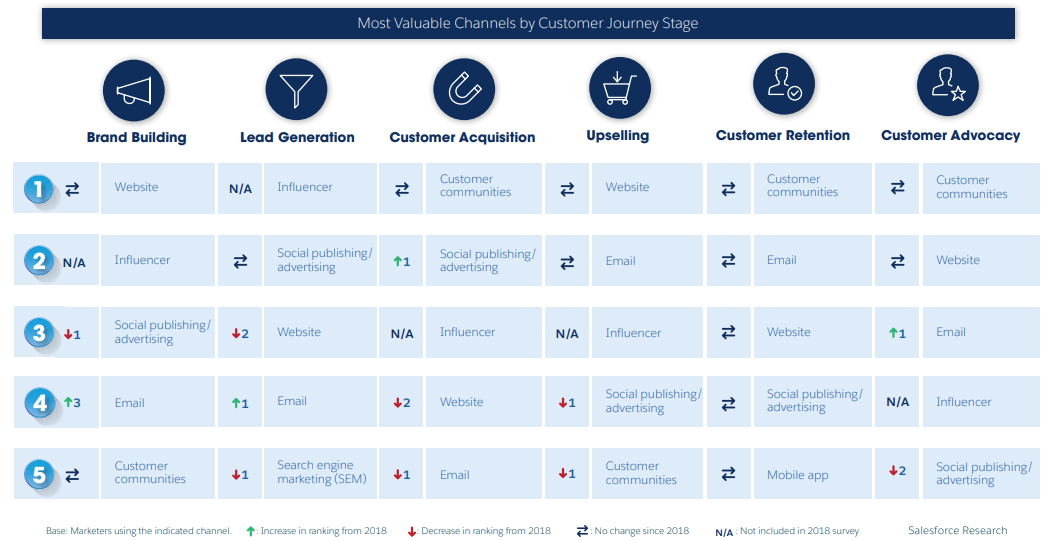
Are you looking for Salesforce consulting services? You are at the right place! Contact us today for expert services around Salesforce!
References: Salesforce












